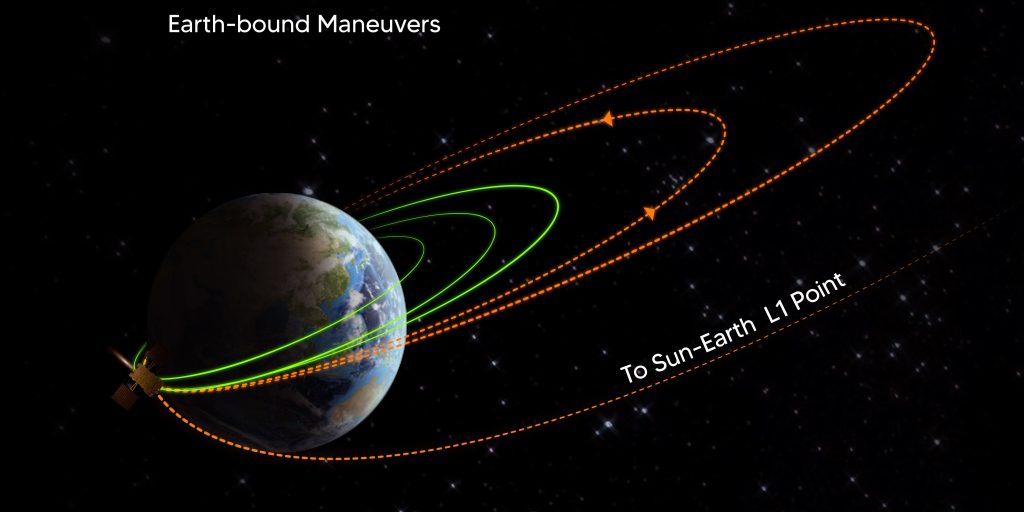
Aditya L1 Solar Mission
Aditya L1 Solar Mission: According to information released by the Indian Space Research Organisation (ISRO), the following maneuver is planned for September 15, 2023, about 2:00 AM. Prior to another maneuver that would bring it back to Earth, this one will signal the start of its ascent towards the Earth-Sun Lagrange Point L1. The new orbit is 296 km x 71,767 km in size.
“Third Earth-bound maneuver (EBN#3) related to Earth-to-L1 transfer of Aditya-L1 has been successfully completed. Mauritius, Bengaluru, SDSC-SHAR, and Port Blair ground stations tracked the spacecraft during this operation. The newly acquired orbit is 296 km x 71767 km. The next Earth-bound maneuver (EBN#4) is scheduled for approximately 02:00 IST on September 15, 2023,” ISRO tweeted.
Aditya-L1, India’s first solar observatory launched into space, is intended to study the Sun from the Sun-Earth Lagrangian Point L1, which is situated roughly 1.5 million kilometers from the planet.
The second Earth-bound maneuver took place on September 5 after the first maneuver was successfully finished on September 3. During the 16-day orbital journey around Earth, it is believed that these maneuvers are crucial for synchronizing the spacecraft’s velocity with that required for continuous advancement toward L1.
Aditya-L1 Mission:
The third Earth-bound maneuvre (EBN#3) is performed successfully from ISTRAC, Bengaluru.ISRO’s ground stations at Mauritius, Bengaluru, SDSC-SHAR and Port Blair tracked the satellite during this operation.
The new orbit attained is 296 km x 71767 km.… pic.twitter.com/r9a8xwQ4My
— ISRO (@isro) September 9, 2023
Aditya-L1 was successfully launched on September 2 from the Satish Dhawan Space Center in Sriharikota by ISRO’s PSLV-C57 launch vehicle.
The spacecraft will arrive at Lagrange Point L1 in its intended orbit, according to the space agency, some 127 days after launch.
According to ISRO, a spacecraft positioned at Lagrange Point L1 and encircled by the gravitational field of the Earth on all sides may see the sun continuously without being interrupted by eclipses or planetary transits.
ISRO and national research organizations developed seven national scientific payloads for Aditya-L1, including those from the Indian Institute of Astrophysics in Bengaluru and the Inter-University Center for Astronomy and Astrophysics in Pune. These payloads will research the Sun’s corona, chromosphere, and other aspects of the sun. Besides, it will gauge the strength of the magnetic field in the vicinity of L1.
Scientists believe that the five Lagrangian Points, also known as gravitational parking lots after the Italian-French mathematician Joseph-Louis Lagrange, which are located between Earth and the Sun are advantageous locations in space for maintaining spacecraft positions because they balance out the centripetal force required to keep objects in a stable position.




4 thoughts on “Aditya L1 Solar Mission Soars with Third Earth-Bound Victory: ISRO Updates”
Comments are closed.